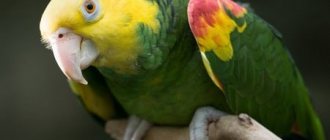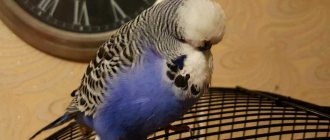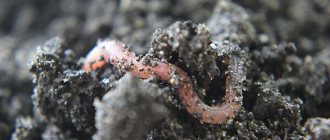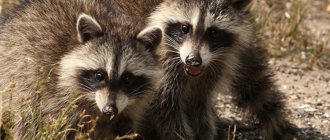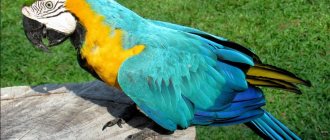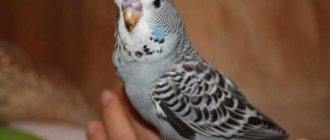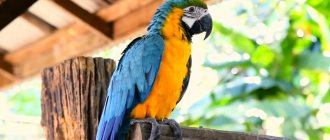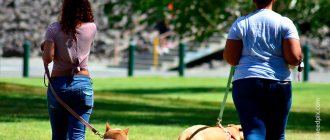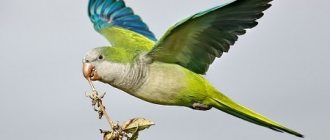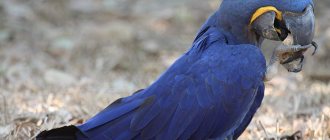In its natural habitat, that is, in Australia and on the islands adjacent to the mainland, the bird feeds on seeds, greens and fruits. The diet of birds at home is similar: grain feed and accompanying additives to replenish vitamins.
Let's find out what birds eat, what foods are of greatest interest to the parrot, and what budgerigars like.
What do budgies like?
The basis of the budgerigar's diet is a grain mixture of various types of millet (65%), oats (20%) and canary oats (10%), as well as other grains and seeds of cultivated and wild plants. It is worth giving your parrots small amounts of flax seeds, sesame seeds, plantain, dandelion, sunflower seeds and hemp seeds. However, by feeding only one grain mixture, your parrot will not get all the nutrients it needs to stay healthy. Therefore, you should supplement your diet with additional nutrients:
Parrots love these foods very much, so they can be used as a stimulus. Some types of grains, such as chumisa, sorghum, mogar, paisa and Senegal millet, are also gentle to parrots. It is also helpful to periodically give your birds chewable honey sticks, which can be easily prepared by hand.
Fruits and berries
Berries and fruits are served fresh. They should be free from mold, rot, dirt and damage. Rinse them with water before feeding. Some fruits, which may contain toxic compounds used to protect crops from pests, should be peeled.
Budgerigars love to eat: apples, pears, bananas, citrus fruits, plums, grapes, watermelon, kiwi, pineapple, pomegranate, peaches, apricots, cherries, rowan berries, sea buckthorn, honeysuckle, raspberries, currants, rose hips, strawberries, wild strawberries. , blueberries, cranberries and cranberries.
Attention! Berries dried at the right temperature retain their vitamins and can be stored in winter.
Vegetables and greens
Greens and vegetables are also served fresh and thoroughly washed. To prevent poisoning, parrots should be fed only seasonal vegetables. Vegetables and greens are rich in fiber, vitamins and minerals. Feed your bird only raw, chopped or grated vegetables. Carrots, turnips, beets, pumpkin, cucumbers, tomatoes, zucchini, cabbage, green peas, beans, and sweet peppers are useful for feeding parrots. The birds are also given herbs: lettuce, spinach, celery, mocha, dandelion, nettle. Weeds can be collected in the summer, dried at a suitable temperature and stored for the winter.
Honey sticks
Honey sticks are a favorite treat of budgies.
Honey is diluted in water and added to flour until it becomes paste-like. Roll the stick in the mixture, sprinkle with grain and leave to dry for 24 hours at room temperature. Pour honey diluted in water over the treat and dry it, then give it to the parrot. In case of exhaustion, after a heavy thaw or illness, it is worth feeding the birds with sticks with quail eggs.
Chumiza
Chumiza is a cereal plant whose inflorescences are panicles and contain a large number of seeds (about 6000 per ear). The shape of the spikelets and the color of the grains depend on the variety. Chumisa is rich in protein, vitamins, minerals, macro- and microelements, pectins, antioxidants, fiber, sugars and fats. In terms of nutritional content, it is superior to rice, millet, buckwheat and barley.
Chumisa strengthens the immune system, improves the functioning of the circulatory system, removes toxins and heavy metal salts. Parrots love chumis, so they can be tamed. Serve chumis 2-3 times a week.
Senegalese millet
Senegalese millet is similar in appearance to chumisa, but has a different color. Senegalese millet grains are a uniform straw-yellow color, while Chumis grains can be black, white, yellow and brown. Senegalese millet is rich in fiber, carotene, B vitamins, micronutrients and macronutrients, but contains less fat, protein and carbohydrates than chumie.
Senegal millet is a seed that parrots love. It is given to birds as a reward during training or taming. You can simply hang it on the cage bars so your parrot can get the corn. Serve Senegalese millet no more than 2-3 times a week.
Greenery
The diet of the winged friend also includes green food. The budgie eats lettuce leaves, some trees and even ordinary grass. This food contains a lot of fiber and substances that are beneficial for the immune system.
Healthy greens include: all types of cabbage, carrot and beet tops, dandelions, clover, spinach, radish tops, chicory leaves, plantain. The leaves should be washed well in water, as bird parasites can settle on them. The greens should be fresh; it is better not to offer them to the parrot if they are withered or stale.
Under no circumstances should you give: tops of tomatoes, eggplants, potatoes. Also prohibited are laurel, spurge, dill, and basil. Store-bought flowers are impregnated with a special composition, thanks to which they last longer. Such flowers should not be given to a parrot.
Favorite treats
Dry food is the staple food and makes up about 70% of the total diet of poultry. Millet, oats and millet are classic choices. However, budgies especially love to eat canary seeds and sesame seeds. This is a treat for them.
Taste preferences may vary from bird to bird. To find out which grain an animal prefers, let it taste different types of solyanka.
The seeds eaten first can be called favorites.
In some cases, it is more practical to buy industrial feed. In addition, they contain a number of useful supplements in the form of vitamins and minerals. Most often these are compound feeds, that is, consisting of several grains, for example oats with powder or sesame with powder.
Fruits, vegetables and berries
Fruits and vegetables can be fed to birds and be sure to include them in your parrot's diet. If you feed your pet only grain, his body will begin to malfunction, leading to constipation, apathy and general deterioration in health.
Budgerigars especially love bananas, apricots and cucumbers. They also love melons and cherries. In some cases, the only way to find out which treat your parrot likes is through experimentation. In other words, you should let him try all the foods he is allowed to try.
If the bird categorically refuses to eat fruits and vegetables, it should be persuaded to do so. There are several techniques you can use. For example, add pieces of fruit to porridge or dry food. The next time you try to feed, the parrot will no longer resist the familiar smell and taste.
You should also use special fruit holders. Placing them on a litter tray in a cage is not allowed. Food mixed with feathers and droppings quickly rots, becoming a breeding ground for pests. If there were fruits on the handle in the morning, remove them in the evening.
All poultry and budgies love porridge. They are tasty, healthy and much easier to digest than dry food. It is impossible to say which cereals budgies prefer. Because everything depends on the bird itself. But in any case, it’s worth trying to treat the bird with porridge.
Some parrots like multi-grain combinations. You can also add grated fruits, vegetables or berries to the porridge. For lively parrots, it is better to cook the flakes to a fibrous consistency rather than crumble them. A pet's small belly is more likely to accept the first option.
In addition to water, juices can be a source of liquid. Budgerigars are very fond of juices from apples, pears and citrus fruits. If you do not want to process the fruit, you can use baby juices. The only thing is that the latter should not contain sugar.
It is better not to buy usual solutions like “Kind” or “We like the garden” for birds. They contain a lot of dyes, stabilizers and other chemicals. You should also remember that juices are a perishable product. They should remain in the cage for no more than a day.
Forbidden fruits in the “wavy” diet
Considering the fact that there are different foods in the diet of a budgerigar, some of them are strictly prohibited. These include:
- salt;
- sugar;
- cones;
- Rye bread;
- milk;
- human food;
- spices;
- onion;
- garlic;
- radish;
- daikon;
- eggplant;
- mango;
- papaya;
- persimmon;
- avocado.
Many people are sure that the twigs that birds use to grind down their beaks can be replaced with nuts. In fact, this is a rather fatty product, and therefore it must be used in minimal quantities. A properly organized diet and care for pets will provide them with the conditions necessary for a normal existence next to a person.
What to limit
First of all, these are high-calorie foods. Dry food and breakfast cereals are not included, but some fruits can make parrots overweight. Moreover, inexperienced owners often feel sorry for their pets and overfeed them.
In terms of calories, banana comes first. Yes, it is rich in vitamins, fiber and minerals, but one fruit contains almost 100 calories. Therefore, give your parrot not every day and in small doses: 1 centimeter slice per day.
In second place are grapes. One bunch contains about 100 calories. In addition, grape seeds have energy value. It is allowed to give the parrot no more than a few berries per day.
Another high-calorie product is cherries. The same 100 calories are contained in 20 berries. For comparison, the same energy value is contained in 6 apricots. Moreover, the volume of the latter clearly exceeds the volume of cherries. The bird only needs one or two berries a day.
Twigs
Some owners of feathered pets recommend adding thin tree branches to the diet. They are not entirely correctly classified as food, since the parrot mainly sharpens its beak on them and cleans its claws on its paws. But, since at the same time he swallows particles of bark and wood, you should make sure that such food is useful to him.
You can give budgies thin branches of maple, aspen, linden, and various fruit trees, such as apple or plum trees. You can give twigs of nut trees, but they need to be removed from leaves, which contain tannins.
You should not offer oak, pear, acacia, lilac, or bird cherry to your winged friend. The substances in these branches are dangerous for your pet. You need to be careful with conifers: they can be given a little at a time if they are cleared of resin.
When and how much to feed your parrot
One bird should receive two teaspoons of dry food per day. Some people are gluttonous and demand much more. Be sure to monitor the amount of food consumed, as budgies are prone to obesity. It is recommended to divide the daily dose and give it to the birds in portions. Do not allow the resident to eat more than three tablespoons of the grain mixture.
Carefully. Small birds have an accelerated metabolism. Lack of food can lead to negative consequences and even death. You can purchase an automatic feeder for serving food in portions.
Porridge
In addition to food, for variety, you can add porridge to the diet. They can be either brewed in boiling water or boiled. Each parrot has its own preferences for the type of porridge and its viscosity. Having studied the tastes of your pet, you can always please him. You need to cook porridge in water without milk, salt, sugar or any additives. To make the treat sweet, you should stir a teaspoon of honey into about a large spoon of porridge.
It is recommended to give:
- buckwheat;
- rice, wild and brown;
- oatmeal, but only slow cooking;
- millet;
- peas;
- lentils;
- barley;
Sprouted seeds
In addition to granulated food, we feed our parrots with foods containing vitamins. Their source is wheat germ. Seeds can be germinated at home. A handful of grains are washed and placed on cheesecloth in a bowl. Then add water, place in a warm place, and rinse every six hours. The next day the precious delicacy will be ready. Germinating grains are necessary for birds during the mating period and during the raising of chicks.
Vitamins and mineral supplements
The content of vitamins and minerals in the feed cannot satisfy all the needs of the bird. They especially need them during the molting period.
You can buy vitamins and supplements at a pet store or prepare them yourself: add three drops of honey to 100 ml of water, the same amount of lemon juice and 1 ml of apple cider vinegar. Pour the resulting measure into the drinking bowl.
Vegetables and fruits
Vegetables and fruits are a valuable source of vitamins. Seeds and grains are not all plant foods that parrots eat. A healthy treat is grated carrots with chopped croutons.
Cabbage leaves and cores can also be fed to parrots. Before eating, cabbage should be finely chopped. Beans, green peas and corn can be part of your diet. When purchasing, give preference to unripe flasks with soft grains.
Carefully. Peeled apples should be fed to your pet all year round. This is the only fruit that can be eaten without harm to health.
What else can you feed lovebirds besides food:
Small portions of pears and citrus fruits are also good for birds. In addition, birds are not averse to eating raspberries, blueberries, rose hips and currants.
Cereal porridge is what you can feed your parrot if he runs out of food. They are prepared using water, without adding sugar or salt. Cereals contain essential microelements that normalize metabolism.
Oatmeal when feeding parrots can be of any consistency, but only at room temperature. If desired, you can add grated fruit to it. The finished product can be stored in the refrigerator for no more than two days.
Greenery and branches
Green food will enrich your feathered pet's diet. Greens are something that parrots eat with particular pleasure. It is recommended to collect green mass away from roads and industrial enterprises.
Birds need to sharpen their beaks. Wallpaper often becomes the object of their attention. An alternative option is tree branches that can be used to feed parrots after initial treatment. They are placed in cold water for five hours and then placed in boiling water.
Before feeding your parrot, make sure there are no resin drops from the tree.
Poplar, lilac, oak and pear branches are dangerous. A bird can be poisoned by a houseplant. Sometimes birds explore the apartment and taste the green leaves of flowers.
Attention! It is better to move ferns, dieffenbachia, chlorophytum and azaleas to another room. Tradescantia, rose, aloe, chrysanthemum and bamboo are safe.
Water should be served in small portions. It should always be fresh. Do not pour tap water into the drinking bowl. Bottled baby lotion or filtered water is much safer.
What not to feed budgies
Do not give your pet bread, except for breadcrumbs added to grated vegetables. Chocolate is not what you should feed your frilled parrot. This product is harmful even in small quantities. Salt is contraindicated for birds. Parrots should not be fed radishes, celery, garlic, onions, or herbs high in essential oils.
Products containing lactose are also harmful because birds do not produce the necessary enzyme. Drinking milk by birds can lead to stomach diseases, so it is recommended to replace it with fruit and vegetable juices. However, not all dairy products are harmful. Fresh low-fat cottage cheese should be given to birds as a valuable source of animal protein.
Your pet's diet should be varied, but rapid changes are detrimental to the body. New food should be introduced gradually, allowing the bird to get used to it.
